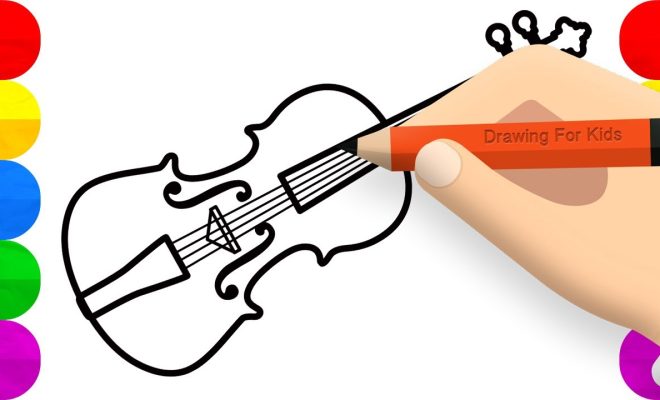How to Draw a Cello: 7 Steps

Drawing a cello, like any other instrument, requires attention to detail and a bit of practice. Follow these seven simple steps to create your own cello illustration.
Step 1: Gather Your Materials
To get started, you’ll need paper, a pencil, an eraser, and something to reference (such as a picture of a cello). Optionally, you can use colored pencils or markers for shading and adding color.
Step 2: Draw the C Body
Begin by drawing the cello’s body shape. A cello has an asymmetrical hourglass shape with two opposing curves on each side. Draw this shape lightly on your paper, making sure that both sides are symmetrical. The top curve should be smaller than the bottom curve.
Step 3: Add F-Holes
On the front side of the body, draw two f-holes—one on either side of the bridge (which we will draw in step 5). These shapes resemble an elongated letter “S”. Keep them symmetrical, with one placed slightly below and to the left of the center point on the top curve, and one below and to the right of the same point on the bottom curve.
Step 4: Draw the Neck and Fingerboard
From the top center part of the body, draw a long rectangle extending upwards from the body to represent the neck. Attach another long rectangle to it at an angle that slopes downward towards the body. This is called the fingerboard.
Step 5: Draw The Bridge
On your reference image, find where the fingerboard meets the body. Directly beneath this point (on top of f-holes), draw a thick line that follows lower border of fingerboard. This represents bridge.
Step 6: Add Strings
Draw four parallel lines starting from bottom of neck (just above fingerboard) all way down over bridge and into lower part of body. These lines represent strings. Be sure to keep lines straight tight.
Step 7: Draw Endpin, Pegs, and Tailpiece
Finally, add details such as endpin, pegs, and tailpiece. The endpin is a small rod that extends from bottom part of cello’s body. Draw this below bottom curve. For pegs, draw two small circles on either side of neck (where it attaches fingerboard), making them symmetrical. Lastly, draw tailpiece as a curved triangular shape situated between f-holes connected to the endpin by a thin line.
Now you have successfully drawn a cello! Feel free to add color and shading to your drawing to capture its intricate beauty even more accurately. With practice patience, you will soon be able-create detailed illustrations of other stringed instruments as well!

